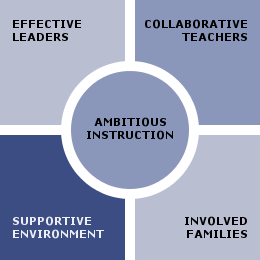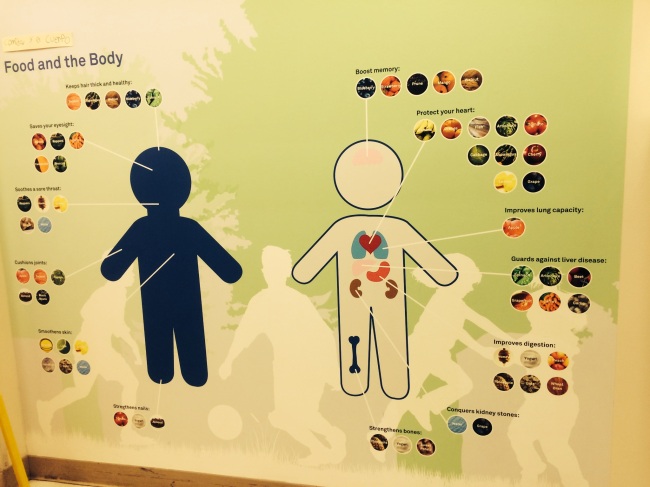Starting graduate school has meant stepping away from the blogosphere for quite some time, but something I heard recently made me angry enough to return.
This week, I attended a conference held in honor of the 50th anniversary of the famous Coleman Report, hosted at Johns Hopkins. Don’t get me wrong – despite the rest of this post, the conference was, overall, very interesting and well-executed; you can see some of the Twitter-worthy highlights #JHUColeman. The conference consisted of two days of presentations and panels, with the first day focusing on researchers and the second on policymakers. In the spirit of the 700+page Coleman Report, dialogues were nuanced, stimulating, and fairly non-ideological.
Until Ian Rowe spoke.
Speaking in the second-day panel entitled “Community and Schools,” Rowe argued that one of the most significant problems facing student in inner-city schools today was the lack of the success sequence in children’s lives. In particular, he fought for the idea that children in impoverished families are struggling to maintain solid school attendance records and achieve academic excellence due to family structure. Rowe stated that, in America today, a child – black or white – with two parents is more likely to have success in the educational system than a child with one parent. From this, Rowe concluded that in order to greatly improve poor children’s educational outcomes, poor parents must follow the success sequence – getting married before having children.
Unfortunately, there was very little time left for audience questions at the end of the panel, so that I was not able to question Rowe about the disturbing causal inference implied in his argument. Fortunately, I have a blog on which to expand my many impassioned counterarguments to Rowe’s position.
Without discussing the problematic foundation of the success sequence research in the first place, I want to focus on Rowe’s argument that single mothers (I will focus on mothers, as there are many more single mothers than single fathers in this country, and it is safe to assume that Rowe was aiming his argument at single mothers) are harming young children’s educational chances by not marrying. According to the causal arrow put forth in Rowe’s argument, one might assume that single mothers who do not marry their children’s fathers are either (1) unaware that children in married two-parent households outperform those in single-parent households, or (2) choosing not to marry their children’s fathers despite their ability to improve their children’s lives by doing so.
Both of these implications are extremely insulting to single mothers. First, single mothers do know the potential benefits of raising children in a two-parent household. According to a representative sample studied by Lichter et al. (2004), the majority of disadvantaged and minority-race single mothers value marriage as a personal goal. However, as the study points out, these marriages often cannot come to fruition due to a number of factors. It is critical to understand that these are not random factors – the majority of these factors relate to the mother’s personal understanding of how to protect the wellbeing of the child. What single mothers understand that Rowe seems to not comprehend is that a two-parent household is qualitatively extremely different than a stable two-parent household.
When mothers fail to marry their children’s fathers, it is not an attempt to sidetrack their children’s chances of life success, but rather an attempt to protect them from very real harms that a father’s presence may inflict upon them, with both short-term and long-term consequences. In a study that drew on qualitative interviews with almost 300 low-income single mothers in three U.S. cities, Kathy Edin (2000) found that these mothers largely agreed on the necessary prerequisites for marriage: financial security, employment stability, a viable source of earnings. Aside from financial considerations, mothers also placed a high value on finding men who would enhance (or at least not diminish) their respectability, be worthy of truth, and not engage in domestic violence. All of these concerns are clearly connected to the ability to care for children and protect them from financial instability and physical harm. I will not delve into the research demonstrating a correlation between financial/physical security and children’s success in school, but suffice it to say that this relationship has been well-documented by researchers, witnessed by teachers, and substantiated in the work of psychologists and child protective services on a daily basis.
Given both the location of the Coleman conference in Baltimore as well as the frequent references to the Moynihan Report throughout the Coleman-themed conference, I also feel the need to reference the vast body of work demonstrating the inability of black low-income mothers to find suitable husbands even when they want them. Spanning back to the time of slavery, marriage has been an historically white institution in the United States. To clarify, this does not mean that black women did not want to marry; on the contrary, black women and men pursued marriage in the face of life-threatening risks, running away from slave masters to start a life together. Furthermore, in the de jure sense, black marital freedom is still relatively new. Only in 1967 did the Supreme Court ban anti-miscegenation laws in Loving v. Virginia.
As is the case with most social phenomena, de jure ability does not necessarily or immediately translate into de facto ability, and the ability for high-poverty black mothers to pursue marriage is no different. Starting with the work of William Julius Wilson, many studies have demonstrated the profound difficulties that low-income black men and women face in the pursuit of marriage. In When Work Disappears (2011), Wilson famously argued for understanding changes in the economy and the decline of blue-collar employment opportunities as key to understanding the difficulties facing low-income communities. Wilson demonstrates that joblessness in low-income neighborhoods can lead to huge growth in drugs and violent crime. On top of this, the NAACP estimates that, if current trends continue, one in three black men born today can expect to spend time in prison during his lifetime (NAACP, 2016). All of this leads to a very low number of “marketable men” in low-income communities – particularly black communities – for single mothers to marry. This is not because single mothers are looking for perfect men, but because they are looking simply for stable men who can provide a safe, positive influence in their children’s lives.
While Rowe may think that raising children takes a two-parent household, single-mothers demonstrate that raising children takes a village, especially when having a two-parent household is not a safe or available option. In order to try to make up for the lack of father figures available, underprivileged single mothers have taken steps to try to improve their children’s lives in other ways. Many studies have shown the important role that kinship networks play in single mothers’ lives, particularly in the black community. Drawing from interviews with never-married black mothers, Jarrett (1994) explains the importance of kin networks: “The extension of domestic and childcare responsibilities beyond the nuclear family represented a primary response to economic marginality. Extended kin networks that centered around women provided assistance to single mothers and their children” (p. 41). Networks of family and friends provide single mothers with help supporting their children outside of the traditional nuclear (and, as I discussed earlier, historically white) family form.
As I have tried to show here, an overwhelming body of literature clearly demonstrates that economic marginality influences family structure as well as children’s educational outcomes. This does not mean that low-income children of single mothers do poorly in school because their mothers choose not to marry their fathers. What it does mean, however, is that there is a huge portion of the population whose needs will not be met by policymakers who assume that there is a causal relationship between nuclear family structure and children’s educational achievements. It is time to put this myth of causal inference to rest. We must strive to understand the context in which low-income single mothers are struggling to help their children succeed. It is unacceptable and unproductive to vilify these mothers for not participating in the historically white and upper-class institution of marriage.
Citations
Edin, K. (2000). What do low-income single mothers say about marriage? Social Problems, 47(1), 112-133.
Lichter, D. T., Batson, C. D., & Brown, J. B. (2004). Welfare reform and marriage promotion: The marital expectations and desires of single and cohabiting mothers. Social Service Review, 78(1), 2-25.
NAACP (2016). Criminal Justice Fact Sheet. http://www.naacp.org/criminal-justice-fact-sheet/
Wilson, W. J. (2011). When work disappears: The world of the new urban poor. Vintage.







 A mural on the wall at the ACG shows the importance of learning about environmental and personal wellness for students.
A mural on the wall at the ACG shows the importance of learning about environmental and personal wellness for students.